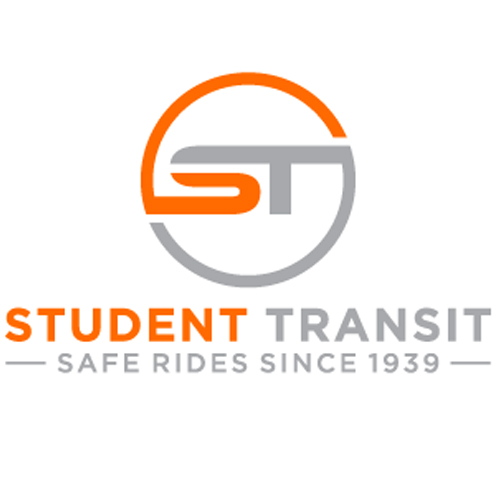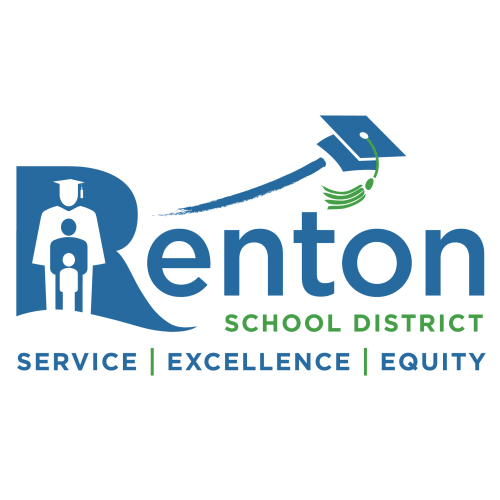2 + 2 = 5
Say goodbye to independent technology silos that don’t communicate or deliver an integrated experience.
And say hello to a comprehensive view of your operations, payroll and communications that transforms your daily operations.
Our School Bus Operating platform arms your team with the information they need to improve decision making around safety, reducing costs, and being more efficient each day.
Trusted by dozens of public and private student transportation fleets to improve how they do business.

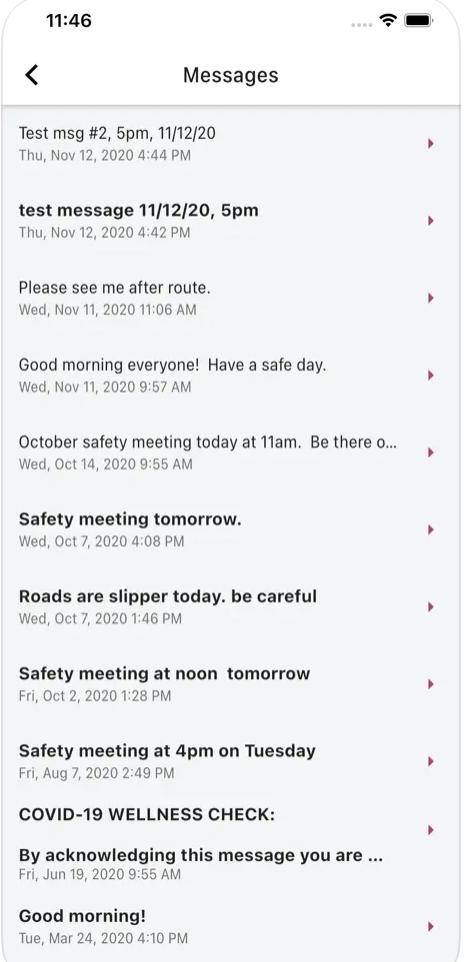
ByteCurve360 enables transportation organizations to improve safety and operational efficiency by merging routing and GPS fleet tracking data into a comprehensive management tool.
Task drivers, reassign routes and verify payroll in seconds.
Better manage late/absent drivers and deliver on-time performance your students depend on.
Trusted by the Finest Names in School Bus Transportation
Revolutionizing School Transportation: How Dispatch Routing Is Changing The Game
Many, if not most, larger school districts and private school bus fleets rely on GPS Fleet Tracking today, as well as routing software, to improve their operations and deliver greater student safety.
These technologie are well established and most transportation leaders appreciate the direct and indirect benefits of using these technologies to improve operations and drive greater awareness and safety.
But many districts remain unaware of a new emerging technology designed to connect the two previously independent platforms into a 360 degree view of operations to empower dispatchers, payroll technicians and fleet directors to capture even better operational efficiencies and uncover new ways to increase safety.
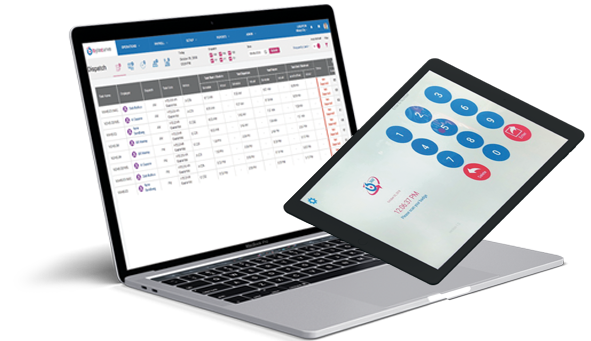
Bytecurve360, developed and supported by a team with more than 100 years of combined student transportation experience, is growing in popularity among fleets who leverage both routing and GPS Fleet tracking.
Featuring a driver communication app, a payroll tool that can be leveraged in the garage via desktop or on the go via the driver app as well as dispatch features designed by a team with years of experience managing complex and dynamic school bus fleets, Bytecurve360 delivers a transformative operational experience.
Some of the most essential features include:
- Better Driver communications so that employees can check in/out remotely, view their schedules and receive messages on their smartphones.
- Easier payroll management so that you no longer have to manually calculate employee guarantees/contracts and overtime.
- Simpler management of daily operations, including assigning/reassigning drivers and vehicles, using real-time integration with GPS and routing systems. This allows all stops to be easily be rerouted when a bus breaks down or a driver can’t come in.
“It’s helped us provide a new level of command and control that allows us to be ahead of issues instead of responding to them,”
Marty Klukas, General Manager, Student Transit.
Dispatch Routing to Improve On-Time Performance
Imagine a future where no child waits unnecessarily at a bus stop, where parents have real-time updates on their child’s whereabouts, where resources are allocated wisely, and where operational costs are reduced, allowing more funds to be channeled into educational programs.
This is the future that dispatch routing systems promise.
Dispatch routing is a process used in various industries, including school districts, to efficiently allocate and schedule resources, such as vehicles and personnel, to complete tasks or assignments. In the context of school districts, dispatch routing typically refers to the management of school bus routes and schedules.
The impact of dispatch routing on the day-to-day operations of school districts can be significant and positive in several ways.
In the first place, dispatch routing software helps school districts optimize bus routes and schedules, ensuring that buses pick up and drop off students in the most efficient manner.
This can lead to
- reduced travel time
- fuel consumption
- operational costs
Efficient routing can also contribute to safer transportation by minimizing the time students spend on buses and reducing the risk of accidents or incidents.
Dispatch routing systems can also help school districts allocate their resources more effectively. This includes assigning the right buses and drivers to routes, which can lead to cost savings and better utilization of assets.
Dispatch routing software can help ensure that buses arrive at stops and schools on time too. This is important for maintaining the reliability of school transportation services and ensuring that students arrive at school and home as scheduled.
Many dispatch routing systems also include reporting and analytics tools that allow school districts to analyze transportation data. This data can then be used to identify areas for improvement and make data-driven decisions.
Dispatch routing systems often include communication tools that enable real-time updates for parents and school staff. This can be particularly useful in cases of delays or emergencies.
By optimizing routes and reducing unnecessary travel, dispatch routing can help reduce the environmental footprint of school transportation, including lower fuel consumption and emissions.
Dispatch routing plays a crucial role in the efficient and effective operation of school district transportation services.
It can lead to
- cost savings
- improved safety
- better resource allocation
- enhanced service quality
ultimately benefiting both the school district and the students and parents it serves.
What are the various systems used in dispatch routing?
Dispatch routing systems use a variety of technologies to carry out their functions effectively. These systems typically rely on a combination of hardware and software components to optimize routes, track vehicles, and communicate with drivers and staff.
- GPS (Global Positioning System)
– GPS technology is essential for tracking the location of vehicles in real-time.
It allows dispatchers to monitor the progress of buses or other vehicles on their routes, ensuring that they stay on schedule and providing the ability to make adjustments as needed.
- Geographic Information Systems (GIS)
– GIS technology is used to create and manage digital maps and geographic data.
Dispatch routing systems leverage GIS data to plan and optimize routes, taking into account factors like road conditions, traffic patterns, and the locations of bus stops and schools.
- Mobile devices
– Drivers often use mobile devices or tablets equipped with GPS and communication capabilities.
These devices receive route information and updates from the dispatch system, allowing drivers to follow optimized routes and report any issues or delays in real-time.
- Communication systems
– Dispatch routing systems use various communication technologies, including two-way radios, cellular networks, and wireless data connections, to communicate with drivers and receive status updates.
This enables real-time communication between dispatchers and drivers.
- Algorithmic optimization
– Dispatch routing systems use advanced algorithms to optimize routes and schedules based on various factors, such as time constraints, vehicle capacities, and service requirements.
These algorithms take into account real-time data and historical information to make routing decisions.
- Telematics
– Telematics systems gather data from vehicles, such as speed, fuel consumption, and engine diagnostics.
This data can be analyzed to improve vehicle maintenance, reduce fuel costs, and enhance driver safety.
- Automated notifications
– Automated notifications and alerts can be sent to parents or guardians, school staff, and transportation administrators to provide updates on bus arrivals, delays, or emergencies.
These notifications may be delivered through text messages, emails, or dedicated mobile apps.
- Machine learning and predictive analytics
– Some dispatch routing systems incorporate machine learning and predictive analytics to forecast traffic patterns, identify potential issues, and continuously improve route optimization.
- Cloud computing
– Cloud-based dispatch routing systems offer scalability and flexibility, allowing school districts to access their routing software and data from anywhere with an internet connection.
This can enhance collaboration and data sharing among different stakeholders.
- Cameras and sensors
– Some dispatch systems may integrate cameras and sensors in vehicles for safety and monitoring purposes.
These technologies can record incidents, monitor driver behavior, and enhance security.
- Routing System
- School districts rely on routing to build and shift complex routes that are always shifting based on bell times, student addresses and road conditions.
- Bytecurve relies on this data to engineer its command and control dashboard that allows transportation leaders to see more than each technology provided independently.
How does dispatch routing compare with traditional manual operations and other alternative solutions?
Dispatch routing systems offer several advantages over manual operations and alternative solutions in the context of managing transportation operations for school districts.
First, dispatch routing systems use algorithms and real-time data to optimize routes, leading to more efficient transportation operations.
They can adapt to changing conditions, such as traffic or weather, to minimize delays. With massaive infrastructe projects happening across the country, these situations are occurring more than ever and can have both short-term and long-term impact on route performance.
On the other hand, manual routing is less efficient as it relies on human judgment and may not account for all variables, leading to sub-optimal routes and schedules.
While some alternatives, like fixed routes with no optimization, can be less efficient as they do not adapt to changing circumstances.
By optimizing routes and schedules, dispatch routing systems can also
- reduce fuel consumption
- labor costs
- maintenance expenses
Manual routing, on its part, may result in longer routes and wasted resources, leading to higher operational costs. While some alternatives, like outsourcing transportation services, may have fixed costs that do not adapt to actual usage, potentially leading to higher costs.
In dispatch routing systems, real-time tracking and communication with drivers also enhance safety by allowing quick responses to emergencies or incidents.
Optimized routes can also reduce the risk of accidents. Alternatively, manual operations may lack real-time monitoring and communication capabilities, making it harder to respond to safety concerns promptly. While in alternative solutions, safety measures can vary depending on the alternative chosen, but they may not offer the same level of real-time oversight.
Dispatch routing systems also use precise algorithms and data, resulting in accurate route planning and scheduling.
While accuracy can vary depending on the alternative chosen, but some alternatives may be less precise than dispatch routing systems.
These systems can also adapt to changing conditions, such as student enrollment fluctuations or road construction, ensuring that routes remain optimized.
Manual routing may struggle to adapt quickly to changes, leading to inefficiencies and disruptions. While in alternative solutions, adaptability varies by alternative, with some solutions being more flexible than others.
Dispatch routing systems also provide valuable transportation data that can be used to make data-driven decisions and continuous improvements. On the other hand, manual operations may lack comprehensive data collection and analysis capabilities. While in alternative solutions, data availability and analysis capabilities depend on the chosen alternative.
Lastly, in dispatch routing systems, real-time communication with drivers and stakeholders enhances coordination and information sharing.
Manual operations may rely on less efficient communication methods, such as phone calls or paper schedules. In alternative solutions, communication methods vary depending on the alternative, but some may not provide real-time updates.
Dispatch routing systems offer superior efficiency, cost savings, safety, accuracy, adaptability, and data analysis capabilities compared to manual operations and many alternative solutions.
Pain points dispatch routing resolves in school districts
Dispatch routing systems effectively address several stubborn pain points in school districts, helping to streamline transportation operations and improve overall efficiency and service quality.
To begin with, manual route planning can result in suboptimal routes and schedules, leading to longer travel times, increased fuel costs, and operational inefficiencies.
Dispatch routing systems optimize routes and schedules to minimize these issues, saving time and resources.
Ensuring the safety of students during transportation is also a top priority for school districts. Dispatch routing systems provide real-time tracking and communication tools that enhance safety by allowing quick responses to emergencies, accidents, or unexpected delays.
Inaccurate route planning, excessive fuel consumption, and labor inefficiencies can contribute to high operational costs too. Dispatch routing systems help reduce costs by optimizing routes, improving fuel efficiency, and optimizing resource allocation.
Traditional communication methods, such as phone calls or paper schedules, can also be inefficient and prone to miscommunication. Dispatch routing systems offer real-time communication with drivers, parents, and school staff, ensuring that everyone has accurate information.
Without comprehensive data collection and analysis, school districts may also struggle to make informed decisions and improvements. Dispatch routing systems provide valuable transportation data that can be analyzed to identify trends, address issues, and make data-driven decisions.
Manual routing can also be inflexible when faced with changing conditions, such as enrollment fluctuations or road closures. Dispatch routing systems can adapt quickly to these changes, ensuring that routes remain optimized.
Also, parents and guardians are often concerned about the safety and reliability of school transportation.
Dispatch routing systems offer features like real-time tracking and notifications, which help address these concerns by providing transparency and updates on bus locations and delays. This can improve driver satisfaction and retention.
School districts must also adhere to various regulations and compliance standards related to student transportation. Dispatch routing systems can help ensure compliance by generating routes that meet legal requirements and standards.
In the event of emergencies or natural disasters, dispatch routing systems can play a crucial role in coordinating evacuation plans and ensuring the safety of students and staff.
School districts often need to provide transportation for students with special needs, which can be complex. Dispatch routing systems can accommodate these requirements by generating routes that meet the specific needs of these students.
Dispatch routing systems resolve persistent pain points in school districts by
- Improving efficiency
- Safety
- Cost-effectiveness
- Communication
- Adaptability to changing conditions
- Data analysis capabilities
- Compliance with regulation
These systems play a vital role in ensuring that students are transported safely and efficiently to and from school, which is a fundamental aspect of a school district’s operations.
Unlocking Efficiency and Safety: Join the School Transportation Revolution with Bytecurve
In today’s ever-evolving world, the efficiency, safety, and reliability of school transportation are paramount concerns for both educators and parents.
We’ve explored how dispatch routing systems have emerged as the game-changer, addressing the long-standing pain points that have plagued school districts for years.
From optimizing routes and schedules to enhancing safety and communication, these systems are revolutionizing the way students get to and from school.
But this isn’t just a story of technological innovation; it’s a story of better education, of nurturing the future leaders of our world. When school districts invest in dispatch routing systems, they’re not just streamlining operations; they’re ensuring that every child’s journey to school is as efficient, safe, and comfortable as it can be.
If you’re a school district administrator or a concerned parent, it’s time to take action.
Consider investing in the Bytecurve dispatch routing system.
With its state-of-the-art technology, robust features, and proven track record, Bytecurve360 can revolutionize the way your school district manages transportation operations.
Don’t wait for inefficiencies to persist, safety concerns to linger, or operational costs to spiral out of control. Take the proactive step toward a brighter, more efficient, and safer future for our students.
Join the ranks of forward-thinking school districts and experience the transformative power of dispatch routing systems.
Ready to make a difference? Contact us today and embark on a journey toward a more efficient, safer, and cost-effective school transportation system with Bytecurve.
Together, we can pave the way for a brighter future for our students.
Explore the Bytecurve Dispatch Routing System and revolutionize your school district’s transportation operations today.
Contact us for a free consultation and discover the power of efficiency, safety, and innovation in school transportation.
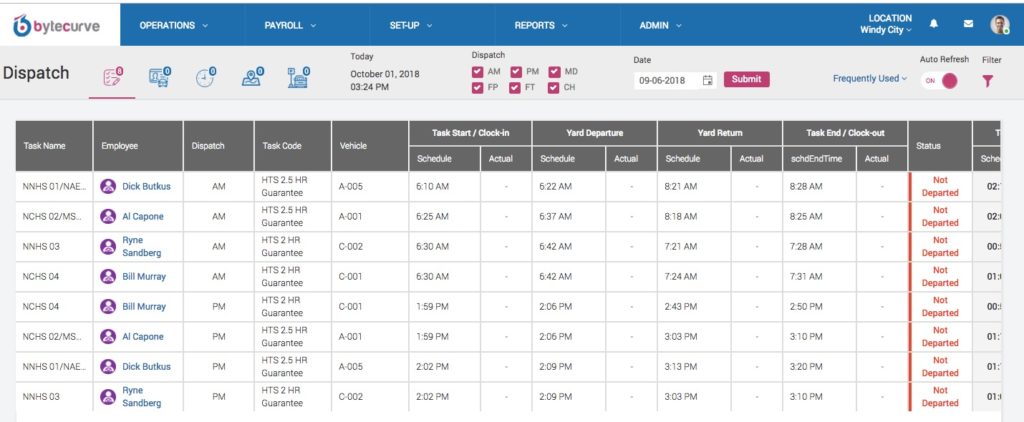
Driving into the Future: Why Your Fleet Deserves the Byte Curve Advantage
In an era where technology is driving change at unprecedented speeds, fleet management can’t afford to remain in the rearview mirror.
GPS dispatching systems are not just a modern upgrade; they are a transformative tool that addresses critical pain points, enhances safety, optimizes resources, and delivers undeniable ROI.
These systems weave together real-time data, analytics, and actionable insights to craft a roadmap for more efficient and effective fleet operations.
If you’ve ever found yourself lost amidst the challenges of manual dispatching or yearned for a clearer view of your fleet’s movements and health, the answer is clear. It’s time to steer your operations into the future.
Ready to navigate the fast lane to enhanced fleet management? Consider investing in the Byte Curve GPS dispatching system – where precision meets performance.
And when combined with the Bytecurve360 dashboard, which also integrates data from all the major routing providers, student transportation leaders can transform the way they manage school bus fleets to improve safety, efficiency and payroll.
Integrated Student Transportation Software

Secure
Only authorized employees will be able to access DriveOn based on a customer specific access code. This code can be turned off as needed by an authorized administrator.

User friendly
DriveOn is easy to use with a simple, smart interface.
Available on both iOS and Google Play stores.



